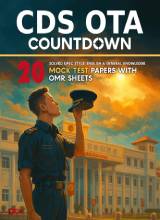The Hero of 1971 war Gnat ‘HAL Ajeet’ fighter Aircraft
Hello folks, hope you all are doing wonders.
In this blog, we are going to throw some light on an aircraft that becomes the hero for the 1971 war.
We will tell you interesting facts about the Gnat ‘HAL Ajeet’ fighter aircarft.
The Aircraft is none other than the Gnat which is also well known as ‘HAL Ajeet’.
Its name ‘Ajeet’ in Sanskrit basically means “Invisible” or the “unconquered”.
This aircraft showed such dominance over the Pakistani Saber jets that this was also nicknamed as the ‘Saber Slayer’.
Despite being less advanced to the Sabers, it proved its mettle by destroying a number of Sabers in the war.
- The Indian Gnat is also known as the ‘HAL Ajeet’ was a jet-powered fighter aircraft.
- It was basically developed and manufactured by the Hindustan Aeronautical Limited.
- The aircraft served for the Indian Airforce from the year 1977 to 1991.
- It was basically developed from the Folland Gnat.
- It took part actively during the Indo-Pakistan war of 1965 and 1971.
- Interestingly, it was the aircraft used by the only PVC recipient of IAF Flying Officer Nirmal Jit Singh Sekhon for protecting the Srinagar base from the marauding Pakistani Sabers.
- It was decommissioned or retired from the service in the year 1991.
- Now it’s prototype is used for the purpose of decoration in Air Force stations.
Specifications of the Gnat ‘HAL Ajeet’:
- Crew: 1
- Length: 9.04 m
- Wingspan: 6.73 m
- Height: 2.46 m
- Wing Area: 12.69 Sq. m
- Aspect Ratio: 3.56
- Empty weight: 2,307 kg
- Loaded weight: 3,539 kg
- Max takeoff weight: 4,173 kg
- Max Speed: 1,152 km/h
- Combat radius: 172 km
- Guns: 2X30 mm ADEN canons with 90 each round each.
- Bombs: Up to 1,985 lb (900 kg) of external stores on four underwing hardpoints.
Variants of HAL Ajeet:
- Gnat Mk 2: It was the original Indian Air Force designation for the Ajeet Mk 1.
- Ajeet Mk 1: Single-seat lightweight ground attack and interceptor fighter aircraft.
- Ajeet Mk 2 Trainer: Two-seat advanced jet training prototype.
Role in the wars:
- During its service in the Indian Air Force, the Gnat was one of the very successful aircraft for active combat missions.
- The mighty Gnat was used in both the Indo-Pakistani War of 1965 and 1971.
- Moreover, it was used for the purpose of low-level air superiority missions and to perform short-range ground attacks.
- It proved its supremacy to the North American F-86 Sabre and crashed a number of Sabres that was a heavy loss to Pakistani Air Force leading to the glory of 1971 war.
- A total of 79 Gnats were built and used and operated between 1977 and 1991.
- During the 1971 war, on 14th December 1971, 6 Pakistani Sabres from Peshawar base attacked the Srinagar Airfield.
- Flying Officer Nirmal Jit Singh Sekhon was posted in the same airfield being attacked.
- Sekhon rolled for the taking off the mighty Gnat and attacked the first Sabre pair, which was reforming after the bombing run.
- Despite the fact being outnumbered to 4:1 Fly. Officer Sekhon with the mighty Gnat remains to fight.
- His Gnat was able to shot down one more Saber, but with a fatal hit his Gnat crashed and the hero was martyrd for the glory of the country.
Important Military operations every aspirant should know






 Order Now on Amazon
Order Now on Amazon

Thank you For your Service 🙏